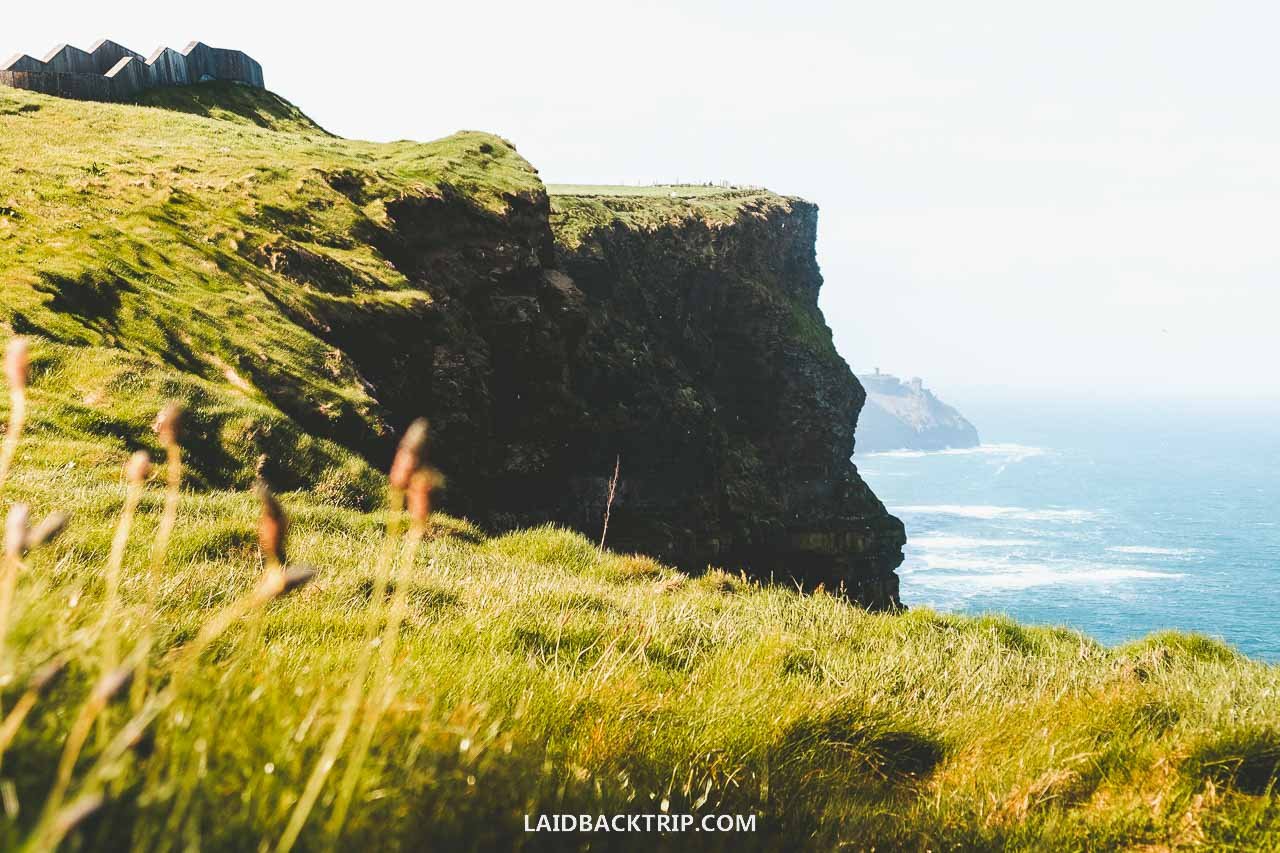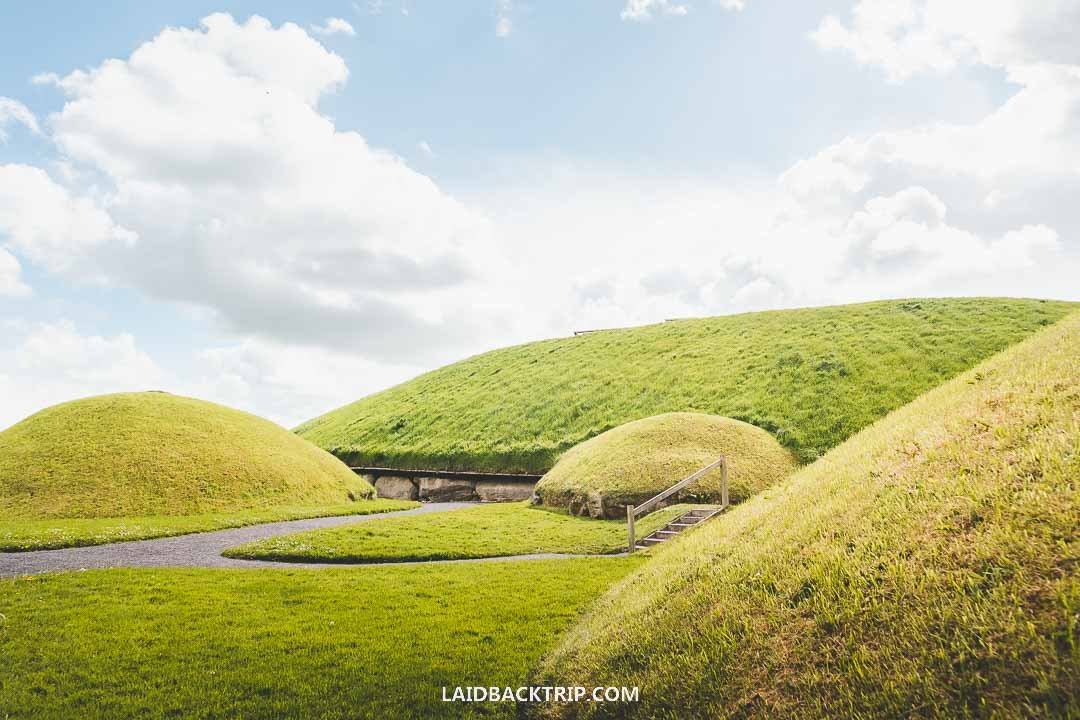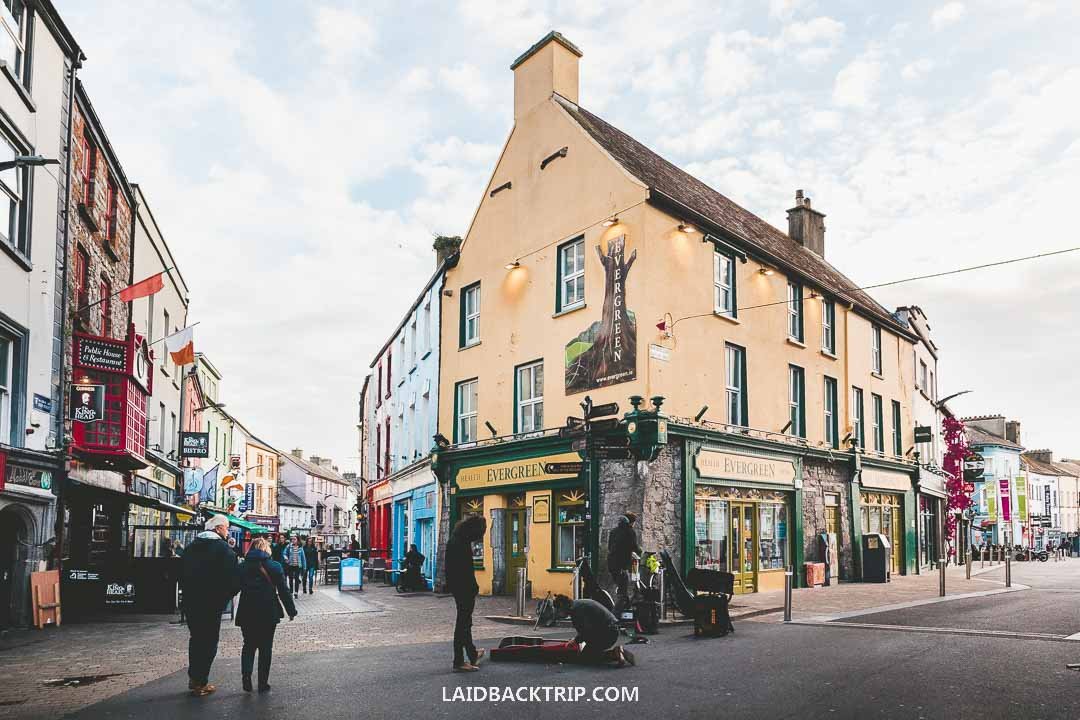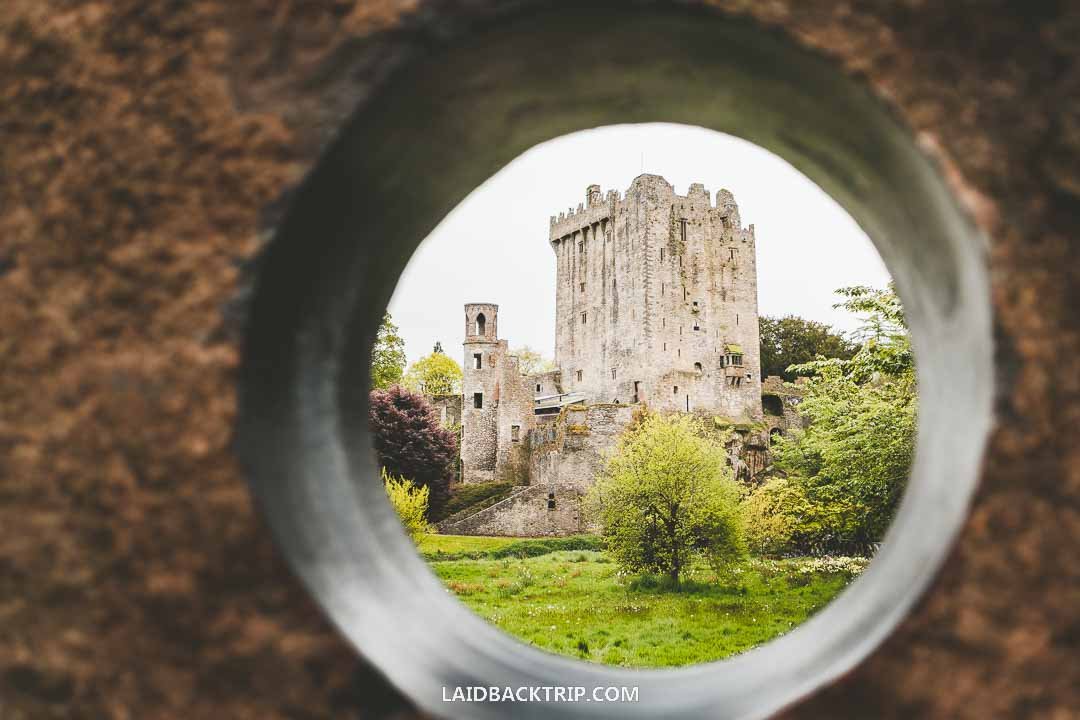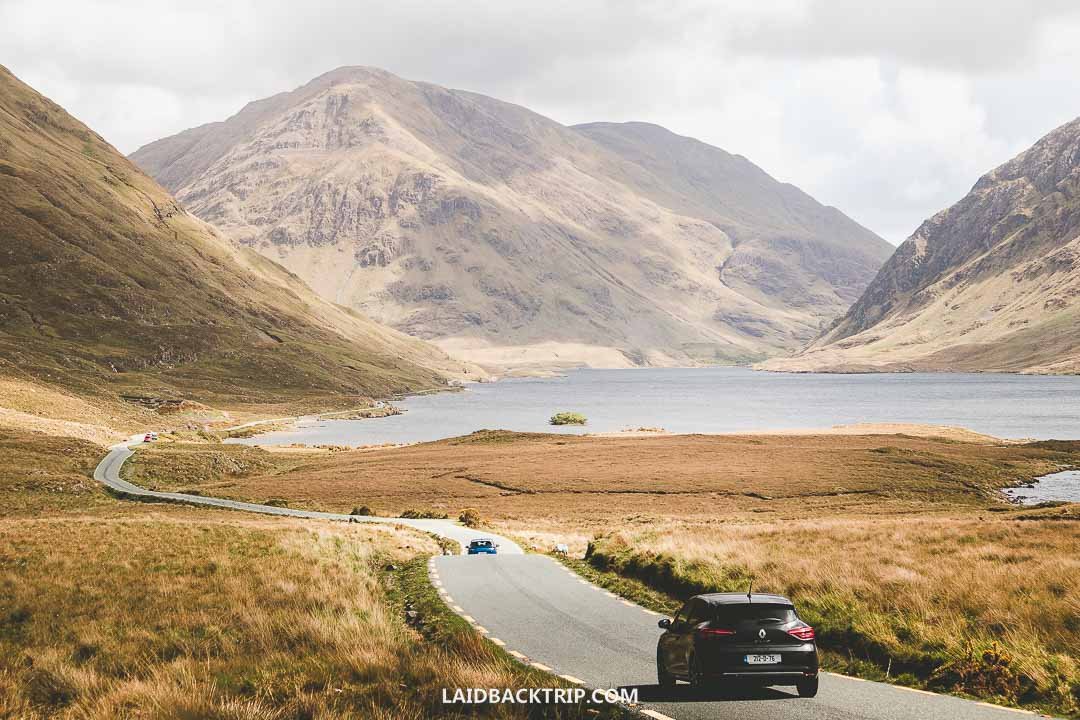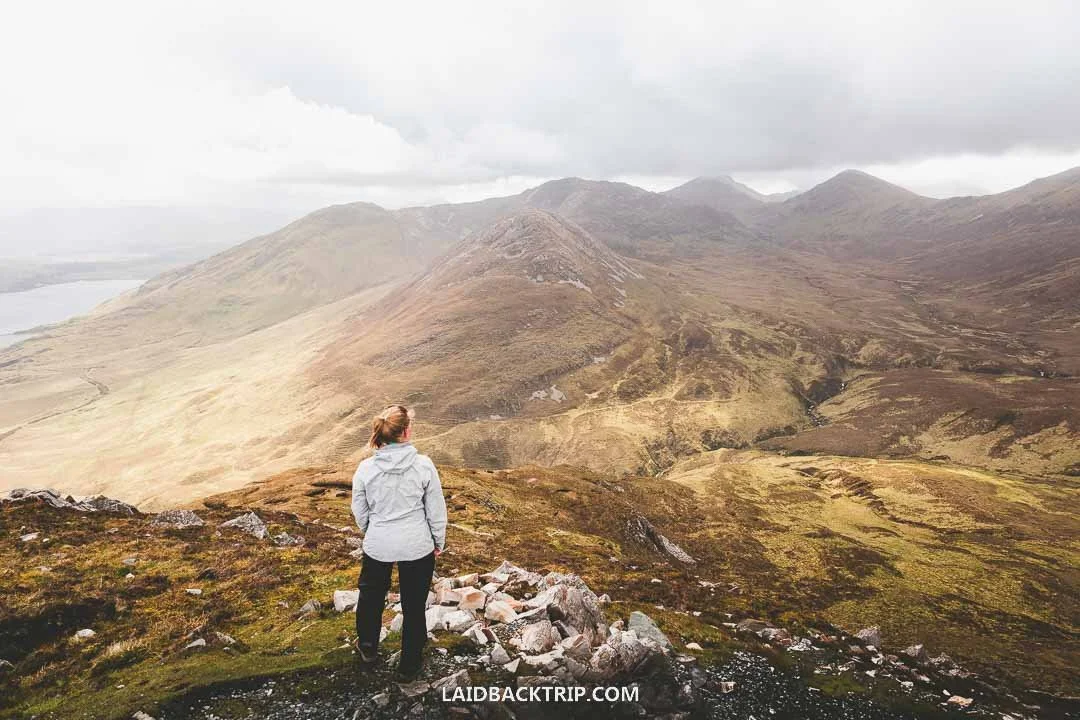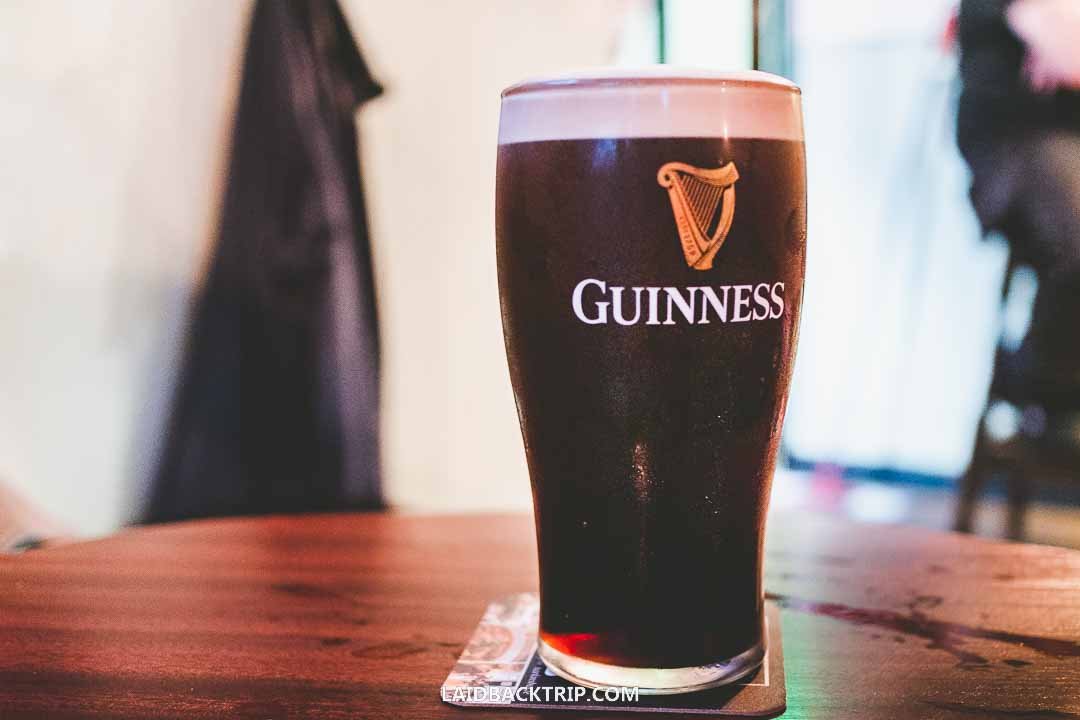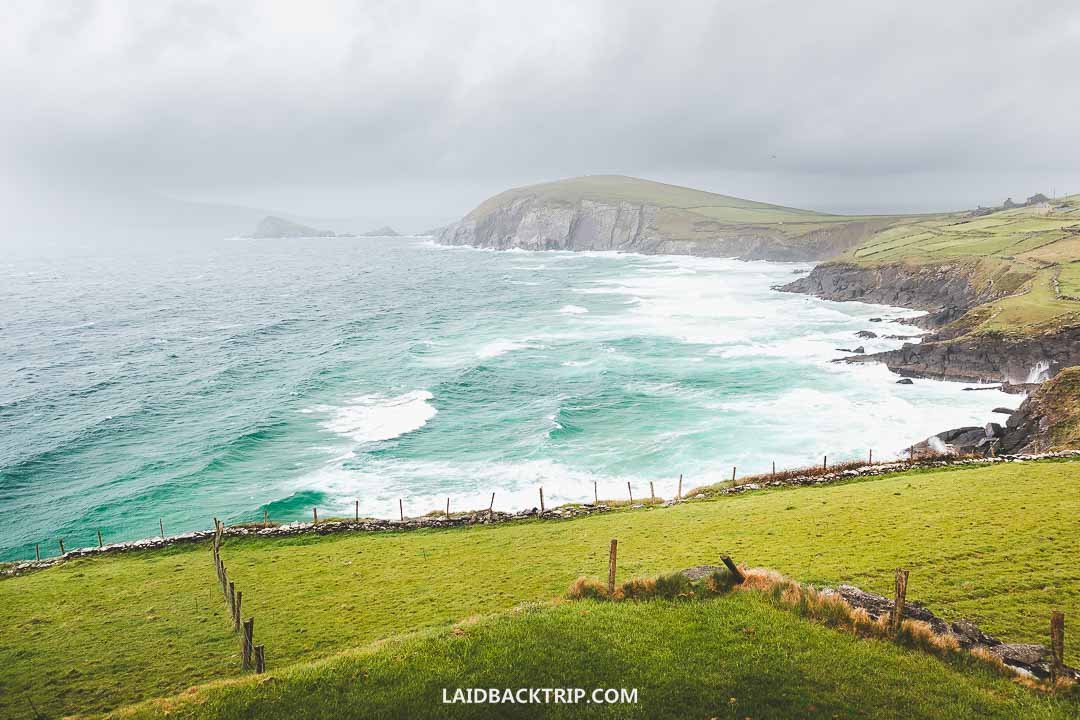16 Things to Know Before Visiting Ireland
Are you planning your trip to Ireland? Read our travel guide to find everything you should know before visiting Ireland for the first time.
Ireland is a beautiful country and a perfect travel destination. It's a very safe and welcoming European island packed with incredible attractions.
Simply put, it's an amazing place for vacation and well worth taking the time to explore.
It has green postcard-like scenery, medieval castles, haunted abbeys, massive cliffs, coastal drives, tons of pubs, and friendly locals.
It's one of the easiest countries to visit (not just in Europe), a fact that every traveler appreciates regardless of their experience.
Still, there are a few key things you should know before going to Ireland.
So if you're planning a visit to Ireland, you've come to the right place. Let's dive into it.
Ireland and Northern Ireland
Even if geography wasn't your favorite subject in high school, we bet you heard there are two countries with remarkably similar names.
Ireland and Northern Ireland.
In a nutshell, they are separate countries with different governance (one of the differences is that Ireland has a president, while Northern Ireland's head of state is a king or queen) and currency on the same island.
So it's pretty obvious that there is a difference between Ireland and Northern Ireland.
The Republic of Ireland, or shortly Ireland, covers the majority of the island.
Ireland is a sovereign republic and a member of the European Union.
Its currency is Euro (€1 or EUR), its official languages are English and Irish, and Dublin is its capital city.
Northern Ireland sits in the northeast corner, is much smaller, and is part of the United Kingdom.
The currency in Northern Ireland is Pound Sterling (£1 or GPB), the official language is English, and the capital city is Belfast.
As this is a post about Ireland, we'll mostly talk about the Republic of Ireland unless mentioned otherwise.
From a tourist point of view, both countries offer a very similar travel experience.
In fact, even after Brexit, there is still no physical border between Ireland and Northern Ireland.
Therefore, traveling between both countries is still easy as ever.
Interestingly enough, the first major difference you will spot once you leave Ireland is that the road signs are no longer bilingual (Irish and English) and that Northern Ireland uses miles instead of kilometers per hour.
Due to their size difference, you will obviously need more days for Ireland, as there is simply so much more to see and do.
Don't take us wrong here. Northern Ireland has many amazing sites as well.
Lastly, while both countries use different currencies, you won't still need to withdraw any larger amounts of money as you can pay easily by credit card for pretty much anything.
Ireland is Expensive
Hands down, Ireland is one of the most expensive countries in Europe.
Truth be told, Europe is generally not the most budget-friendly destination you can find on the globe.
Still, the cost of travel in Ireland is among the highest. Interestingly enough, the economic rise of Ireland is quite recent, and the entire Celtic Tiger miracle happened between 1995 and 2000.
Unfortunately, one of the highest costs of traveling to Ireland is lodging. Even a single bed in a dormitory is not cheap, especially in major cities.
And if you don't want to share a room with 15 other random strangers, then you should be prepared that accommodation will take a big bite out of your vacation budget.
The good news is that there are always ways to cut down your expenses.
The amount of money you should save for travel will vary depending on your travel style, trip duration, and which sights you want to see.
Just be prepared that visiting Ireland on a budget might be more challenging than in other destinations.
History
The Republic of Ireland is a fairly young state, as it gained its independence from the U.K. on the 21st of January, 1919.
Even though it might seem not much happened in this short period, the opposite is true.
And the events that took place in this relatively short span of time were often very turbulent.
Furthermore, the history of Ireland goes way back beyond this date.
In fact, the first settlers inhabited Ireland around 10.000 BC, and there is even earlier evidence of human presence.
From early Stone Age farmers, the early Christian period, the Viking era, and the Norman era to the union with Great Britain to the Great Famine, War of Independence, and Civil War, Irish history is packed with challenging events and periods.
By the way, due to poor living conditions during the Great Famine caused by potato crop failure, Ireland was hit by a strong emigration wave.
It's estimated that about a million people died and another million emigrated in the mid-1800s.
Today, many Americans come to Ireland solely to look for their Irish ancestry.
Obviously, there is so much more to the history of Ireland, and it only makes sense to learn some of the most important events to better understand the country.
By the way, Ireland has some of the most impressive prehistoric attractions in the world.
In places such as Carrowmore, Bru na Boinne, Poulnabrone Dolmen, or Queen Maeve's Tomb, you can expect stone circles, passages, cemeteries, tombs, and much more.
Simply put, the Irish countryside is packed with megalithic sites and neolithic history that will leave you in awe.
Irish Castles and Abbeys
If Ireland has one thing in common with Czechia, it's that there are many castles scattered around the country.
And many of them are definitely worth visiting.
In fact, the list is pretty long, and we had a hard time deciding which ones to include in our Ireland itinerary and which ones we should skip.
The Irish castles are quite different from the ones we have in our home country, so we tried to explore as many of them as possible.
The castles vary from abandoned ruins to well-preserved medieval castles, city forts, or beautifully restored romantic residences.
You can often read that Ireland has thousands of castles, but truth be told, the Irish definition of the word castle is quite loose, and most of them are just smaller structures.
Anyway, what are some of the must-visit castles in Ireland?
To name a few, Rock of Cashel, Cahir Castle, Kilkenny Castle, Bunratty Castle, and Donegal Castle are among the must-see places that should be on your list.
To make matters worse, Ireland also has many abbeys that will make the planning part even harder.
The difference might not be obvious at first sight, but abbeys are monasteries used for religious purposes, while castles were mostly built to defend a certain area.
Once again, you can visit places varying from a very basic-looking abbey in Glendalough (but historically very important) to Muckross Abbey, set in stunning gardens, or charming Kylemore Abbey.
Emerald Isle
For its rich and vibrant greenery that covers neverending rolling hills on the island in the Atlantic Ocean, Ireland was nicknamed Emerald Isle.
We believe the name is quite self-explanatory.
Emeralds are rare stones that have a vibrant green color making the comparison very accurate.
Furthermore, Ireland is the third largest island in Europe after Great Britain and Iceland. Voila! The nickname was born.
The story of the island's name origin goes beyond this easy explanation.
In 1895, a Belfast-born physician and writer William Drennan used this fitting term for the first time in his poem When Erin First Roset.
Mind you, the Irish scenery is much more diverse, and it's not just green.
You will find here also mountains, caves, or almost alien places such as Burren National Park.
Irish Language
While the majority of people in Ireland speak English, it's not the only language you will hear when visiting this beautiful country.
English, together with Irish Gaelic, are the official languages of Ireland.
However, only a few percent of the population actually speaks Irish Gaelic daily.
Therefore, you won't need to bring an Irish dictionary with you. Still, a far greater number of locals say that they speak and understand Irish.
And due to the heavy accents of locals in certain areas, as non-native speakers, we always had trouble identifying whether they still spoke English or had already changed to Irish.
As we've mentioned earlier, some road signs are bilingual in Ireland, making them a bit more difficult to read as there is simply more information on them.
Road Trip
Ireland is a perfect country for a road trip. It's relatively compact, so you can visit many places even if you don't have that much time.
Moreover, the scenery along the way is absolutely breathtaking.
When it comes to the best scenic drives in the world, Wild Atlantic Way has to be somewhere at the top of the list.
It really is a dream come true for every road-tripper.
Stretching for over 2500 kilometers along Ireland's west coast, it includes some of the most famous places in the country.
To name a few, the Ring of Kerry, Dingle Peninsula, and Beara Peninsula are some of the finest places you can explore on this scenic route.
Luckily, renting a car in Ireland is very easy.
And if you make a reservation in advance, it might not be as expensive as you would expect.
Travel Resources
When going on a road trip, we always use Rentalcars.com, a reliable site for booking a rental car in advance.
Driving in Ireland
We've already mentioned above that having a car on your trip around Ireland will be a huge advantage.
There are a few things you should know about driving in Ireland before you go.
Still, driving on the left will be the biggest difference.
For people coming to Ireland from North America or Continental Europe, driving on the left side of the road might be a big factor in deciding whether to rent a car or not.
It might take some time to get used to it, especially if you'll be driving on the left for the first time in your life or if you're not a confident driver.
We can't fail to mention that the Irish rural roads are very narrow once you leave the national roads and highways, making the overall driving experience even more immersive.
The roads are also very narrow in certain town areas, especially in the small ones such as Cobh or Kinsale.
The rule of thumb is to drive defensively and pay attention to your surroundings.
Always remind yourself to keep left (especially after short breaks).
Renting a car with an automatic transmission will make driving easier and help you tackle every Irish road.
Safety
Ireland is one of the safest countries in the world to visit, even for solo (female) travelers or families with kids.
Nevertheless, there are still some risks and dangers to watch out for. Wherever tourists are, opportunist thefts exist.
For starters, make sure to read our tips on staying safe in Ireland.
Obviously, if you plan to drive around Ireland, don't leave your valuables in your car.
In big cities, secure your belongings and watch out for pickpockets in crowded tourist areas.
In fact, we always recommend leaving your jewelry (etc.) at home and bringing only necessary items for your vacation, regardless of the destination.
Another big topic is outdoor safety. Ireland is home to some of the most beautiful cliffs we've ever seen, such as Slieve League, Fogher Cliffs, Kerry Cliffs, or Old Head of Kinsale.
But many of these sites lack fences, making the cliff walks dangerous if you get too close to the edge.
There is one simple rule. Never go near the edge!
The cliffs can collapse anytime, and the strong winds can throw you off balance.
We don't have to mention that we should have adequate gear for hiking in the mountains.
If you go alone, always make sure that someone knows your plans.
Travel Insurance
We never leave home without travel insurance that was designed to cover our expenses if something goes wrong during the trip.
Travel insurance protects against theft, flight delays, injury, illness, cancellations, and much more.
World Nomads provides travel insurance for travelers to cover their trip essentials, including sports and adventure activities.
SafetyWing is affordable travel insurance for backpackers, long-term travelers, and digital nomads.
Travel smarter and safer!
Rainy Weather
One of the most common things you will learn from every travel guide about Irish weather is that it's unpredictable.
And that you should pack for any type of weather when visiting Ireland.
However, the most frequent information that will stick in your mind is that the Emerald Isle receives a lot of rain troughout the year.
After all, the ubiquitous green island theme needs a source of its power.
Once you acquire this knowledge, the only thing you need to do is prepare yourself mentally for the inevitable, as the chances for a rain-free vacation are slim.
While the information is not far from the truth, fortunately, it doesn't rain all the time. At least, that was our experience.
Moreover, we both agreed that some places, such as the Blarney Castle or Slea Head Drive, we visited during the rain still kept their magic.
Honestly, the combination of lush greenery all around us, combined with the dark clouds, definitely had its charm, at least if you don't mind the gloomy atmosphere.
Furthermore, Ireland has a mild climate making it an all year round destination.
Sure, summer is the best time to visit Ireland as it receives warm temperatures and sunny days. But even that's not guaranteed.
So that gives you plenty of flexibility to explore the Emerald Isle outside the peak season.
Just make sure to know what to pack for Ireland to have a more enjoyable vacation when visiting the island in the off-season.
The Story of Titanic
Did you know that the most iconic ship in the world had its origin in Ireland?
While everyone knows the tragic story of Titanic's maiden voyage from Europe to New York in the United States, your memory of the ship's origin might be a bit murky.
Built at the beginning of the 20th century (from 1909 to 1912), RMS Titanic was British, even though the owner was John Pierpont Morgan, an American financier and banker from Connecticut.
However, the ship itself was built at the Harland and Wolff shipyards in Belfast, Northern Ireland.
If you're visiting both countries on your trip, make sure to visit Titanic Belfast, one of the best museums we've ever visited.
And if not, go and visit the town of Cobh near Cork.
Originally named Queenstown in honor of the arrival of Queen Victoria, this harbor town in County Cork was the final port of call before sinking a few days later.
Today, it's home to another excellent museum that is currently located at the original White Star Line ticket office.
Guinness Beer
Guinness beer, together with Irish whiskey, very well may be among the top things Ireland is known for.
Coming from a beer country ourselves, we know that this is a very serious topic.
Guinness is the national beer of Ireland and probably one of the most iconic drinks in the world.
And during your journey across Ireland, you won't find many pubs without this dry stout on a tap.
Even if you don't drink alcohol, you should at least head to a local pub to find out what the fuss about Irish pubs is about.
t's one of the best places for socializing and learning the meaning of the Irish word 'craic.'
As there are only a few Irish pubs in Czechia, this was definitely a fun experience for us.
Irish Whiskey
It might be a bit strange to have two alcohol-related topics in an article about things to know about Ireland.
It might be saying something about Ireland. Or it might be saying something about us.
As we want to keep our face straight, we'll just say it's definitely the first option.
Anyway. Ireland has a reputation for being one of the top producers of whiskey in the world, so it's a perfect place to learn the story of the water of life (Uisce Betha in Gaelic).
Even though now the Irish whiskey tours are one of the must-do activities, many distilleries were closed in the early 1900s.
Only recently, the entire industry has seen a massive resurgence in popularity.
Therefore, now is a great time to learn more about traditional Irish whiskey and its history.
We don't have to mention that a bit of modest whiskey tasting goes hand in hand with all that listening.
Many whiskey distilleries are scattered around the island, and some even offer tours.
So, what are some of the best distilleries in Ireland that you can visit on tour?
Bushmills, Tullamore, Jameson, Kilbeggan, or Dingle should definitely be on your list.
By the way, we visited Teeling Whiskey Distillery in Dublin, and it was a great experience.
Filming Locations
Ireland's dramatic scenery offers a perfect setting for many movie scenes.
Recently, thanks to the Star Wars phenomenon, some of Ireland's locations have become more popular than ever.
If the Force is strong with you, then you should not skip places such as Malin Head, Loop Head, Mizen Head, Kilkee Cliffs, or Dunmore Head.
Still, the most famous filming location became the dramatic island of Skellig Michael on the Skellig Ring, introduced in Star Wars: The Force Awakens as Luke Skywalker's final sanctuary.
Still, Ireland offers much more in this department.
For instance, the famous D-Day landings in Steven Spielberg's award-winning movie Saving Private Ryan were filmed on Curracloe Beach near Wexford.
By the way, this is one of the most popular beaches in Ireland for bathing.
If you've paid attention during the Horcrux Cave scene in Harry Potter and the Half-Blood Prince, then you might have recognized the majestic Cliffs of Moher.
A romantic movie, P.S. I Love You, was filmed in County Wicklow and featured Glendalough, Wicklow Mountains, or the Sally Gap.
Even most scenes from Braveheart, a movie that loosely retells the story of William Wallace, the leader of the First War of Scottish Independence, were filmed in Ireland's County Meath near Dublin.
Game of Thrones fans should also visit Northern Ireland.
The island's northeast corner features some of this popular TV show's most famous filming locations.
Ballintoy Harbour, Castle Ward, the Dark Hedges, Tollymore Forest, Downhill Beach, or Larrybane are among the most favorite places that you should not skip.
If you're a movie fan who loves visiting iconic movie locations, then you won't get bored when road-tripping the entire island.
Tap Water
So, is it safe to drink tap water in Ireland? The short answer is yes unless stated otherwise.
Ireland has plenty of water, and there is no need to get it from the grocery store.
Cutting down on single-use plastic with a refillable water bottle is very easy in Ireland.
When road-tripping the countryside, make sure to bring enough water for the entire day, as being a responsible traveler is more fun if you're not dehydrated.
Irish Countryside
If you want to get the most out of your trip to Ireland, you need to spend at least a few days in the countryside. Don't get us wrong.
Do not skip the charming cities of Dublin, Galway, or Cork, as they're fun to explore and offer plenty of things to do and see.
But coming to Ireland without ever stepping into its countryside would be a completely missed opportunity to see the Emerald Isle in its full glory.
No matter if you visit County Wicklow, County Kerry, or County Galway, you will have a blast.
The Irish countryside is exactly as you know it from the postcards or movies.
Green, full of farms and grazing sheep, stunning scenic drives, friendly people, and a laidback atmosphere.
It's so different from the bustling cities that you might be wondering whether you're still in the same country or teleported somewhere else.
The Irish countryside is also full of off-the-beaten-path places that might not be as flashy as must-see sites, but they can be explored without crowds.
Clare, Sligo, and especially Donegal counties were among our favorite areas full of hidden gems.
Travel Resources
Here you can find links to all the travel resources we use and which you might find helpful when planning your next holiday.
Accommodation: When looking for accommodation, we usually search hotels via Booking.com or Hostelworld.
Tours: Although we love to travel independently, some places are better to visit with a guided tour.
We prefer GetYourGuide for its easy-to-use interface and solid reputation. Another great alternative is Viator.
Rental Cars: When going on a road trip, we always use Rentalcars.com, a reliable site for booking a rental car in advance.
Flight Tickets: When looking for flight tickets, you can search Skyscanner to find the best price.
Travel Insurance: World Nomads and SafetyWing cover against risks of travel.
